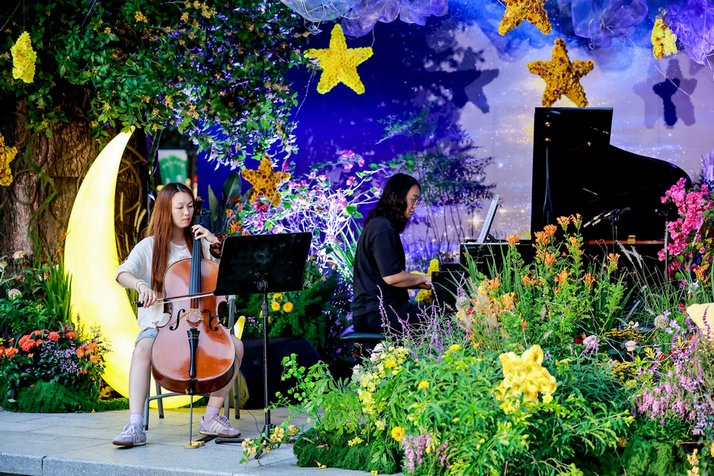Guild halls regain their welcoming lure
Buildings provide a cultural backdrop as they take on a new dimension, Yang Feiyue reports.


The emergence and development of guilds in Beijing were closely related to the ancient official system and the imperial examination system, according to the Beijing Archives.
After Zhu Di, the third emperor of the Ming Dynasty, relocated the capital to Beijing in 1421, officials from all over the country were stationed there and they often had to be transferred to positions outside the capital. Upon retirement, they would usually return to their hometowns, resulting in a high degree of mobility and a widespread phenomenon of living away from home. Therefore, guild halls came into being, primarily used as social venues for local officials and gentry.
During the Ming and Qing dynasties, thousands of candidates flocked to Beijing from all across the country during imperial examinations. To address the accommodation needs of those sitting the exams, especially those from poor families, guild halls proliferated in Beijing.
As Beijing's urban economy prospered, business practitioners often needed to get together and hold meetings and banquets. Therefore, commercial guild halls were established for such purposes.
The guild halls were at a low ebb after the imperial tests were canceled in 1905, and then the capital was moved to Nanjing, Jiangsu province in 1928.
Guilds in Beijing took another hit during the War of Resistance Against Japanese Aggression (1931-45).
Since 1984, local authorities have stepped up efforts to restore and protect those historical guild halls, many of which have been named cultural units under national, municipal and district level protection.
Recreational activities, including performances, have been hosted in many of those guild halls as the country has encouraged historical buildings to open to the public in recent years.
Last month, the Shaozhou Guild Hall, with a history of 155 years, reopened after a restoration project that started last year.
Visitors now can enjoy a neat courtyard nicely shaded by a large scholar tree, an exhibition displaying the culture of Shaoguan city, South China's Guangdong province, as well as an orchid-themed study room at the hall that was about a five-minute walk from the pigment facility.
"Shaoguan has the country's biggest orchid production base, and the orchid is also the flower of the city," explains Wu Haibo, who is in charge of the city's cultural sites management.
Tea tasting, a culture tour and other local intangible cultural heritage and specialty promotion events will be held at the hall, Wu says.
Jiang Wenhong, the city's vice-mayor, says, "The restoration and arrangement of the Shaoguan Guild Hall emphasizes the principle of preservation, combining the rich cultural heritage of Beijing with the elegant Lingnan (South China) regional culture."
Jiang says more efforts will go into continuing to explore the cultural and historical value of Shaoguan Guild Hall, aiming to transform it into a cultural and tourism showcase, an investment attraction platform, and a place for fostering connections between Shaoguan and Beijing.

































